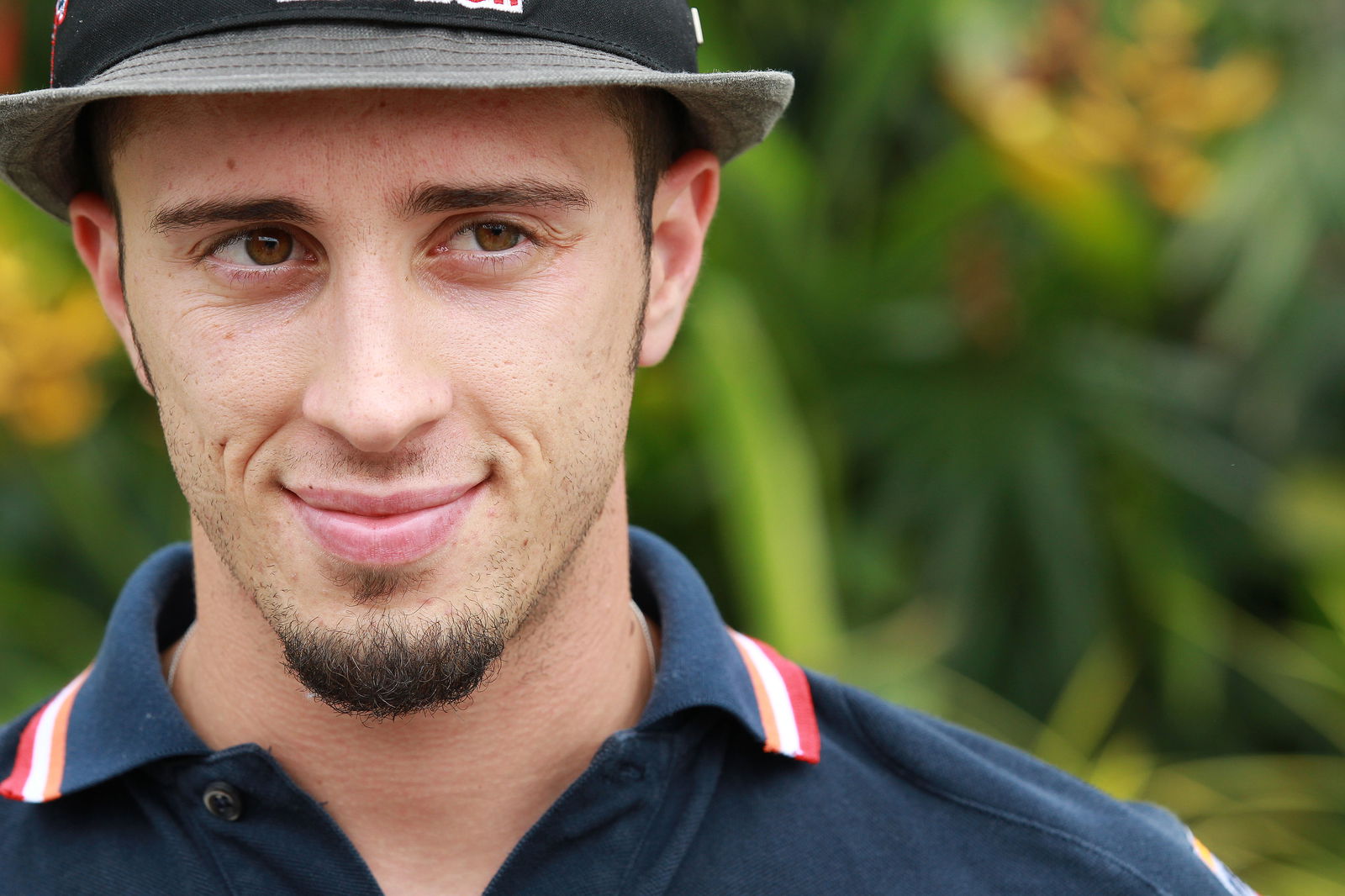What next for MotoGP

By Andy Marking
MotoGP is at a crossroads. Suzuki has joined Kawasaki and Aprilia on the sidelines, while two of the remaining factories (Honda and Ducati) will be providing fewer bikes for 2012, when a new class of Claiming Rule Teams (CRTs) will make its debut.
So what will MotoGP look like in the not too distant future? Here are some of the possible options for 2013 and beyond...
The same number of factory and satellite bikes as in 2012
The 2012 MotoGP World Championship will contain three factory teams - Honda, Yamaha and Ducati. In addition each manufacturer will supply just two satellite bikes. The remaining places on the grid will be filled by new CRT bikes, with six of these 'privateer manufacturer' entries already confirmed and several others expected.
So how likely is it that these six factory and six satellite bikes will remain on the grid in 2013?
Dorna has said it will only financially support CRT bikes from 2013 onwards. This will put added pressure on the satellite teams - Tech 3 (Yamaha), Gresini (Honda), LCR (Honda), Pramac (Ducati) and Cardion AB (Ducati) - to look very seriously at switching to CRT.
With one season of racing under their belts, the CRT machines are also likely to be much more competitive in 2013 - and if not, Dorna might hold enough clout in the GPC to give them further performance concessions.
Likelihood of more satellite teams switching to CRT in 2013? 8 out of 10Likelihood of one or more factory teams pulling out of MotoGP? 3 out of 10
All bikes racing under CRT rules
In 2012, the cut-price CRT bikes will race under different technical regulations to the factory-built prototypes, with concessions in terms of the fuel limit (three litres more) and number of engine changes (12 compared with six for factory/satellite bikes) to help reduce the inevitable gap between the two sets of machines.
Dorna boss Carmelo Ezpeleta has said MotoGP has to change to remain viable, telling Motosprint "It's clear by now that the way the bikes are built doesn't work anymore, it's not suited to the world's economic situation anymore."
It's also clear that Dorna views CRT bikes - which have the opportunity to use modified superbike engines in a prototype chassis - as the long-term solution. How ironic then, that back in the early days of the 990 era, the WCM team was excluded because its bikes used production-based parts.
The use of two sets of MotoGP technical rules, allowing CRTs to race alongside the factory-built prototypes in 2012, seems to be viewed as only a short-term situation - with the premier-class to be 'unified' under one set of rules in the near future.
These rules are sure to be closer to CRT than the present prototypes, with control ECUs and rev limits being mooted as a possible replacement for the 2012 fuel and engine differences.
The fewer bikes the factories put on the grid, the harder it will be for them to resist the change. And if factories start losing their satellite teams to CRT (mentioned above) the economics of building and developing the current breed of full prototypes just for a factory team will become even harder to justify.
Reigning world champion Casey Stoner has warned he may not want to be part of a CRT-style MotoGP, but seven time champion Valentino Rossi is more pragmatic.
Likelihood of all MotoGP bikes racing under CRT-style rules in 2013 or 2014? 8 out of 10
Factories slash leasing costs, making satellite bikes as affordable as CRTs?
If the factories want to regain their 2011 level of influence in MotoGP they really have only one option - to flood the 2013 grid with satellite bikes and thus halt the CRT concept in its tracks.
In order to make that possible some form of gentleman's agreement between the three manufacturers would need to be reached to cap the costs of leasing satellite bikes, making them a real economic alternative to a CRT project.
Given the choice of ether a satellite bike or a CRT bike, for a similar price, most teams would surely go for the more competitive satellite option - knowing that this would also bring technical assistance from the factory.
Of course, bringing down the cost of leasing satellite bikes has long been talked about - and the creation of CRTs is the result of the manufacturers' failure to address the issue. So what's changed now?
Well perhaps the arrival of CRTs and the impending loss of influence they represent will 'focus the mind' of the manufacturers as to how they can make real cost reductions for satellite bikes.
Perhaps, alongside the diminishing 'near-factory-spec' satellite bikes, another lower satellite tier could be agreed between the manufacturers for machines from the previous year that would be maintained but not updated (with seals/part markings if necessary).
Depending on the 2013 rule changes, the 2012 bikes should still be eligible.
Or maybe the manufacturers could simply agree to provide and maintain a certain number of CRT-spec engines for 2013. Direct manufacturer involvement is prohibited from CRT at present, but the key word is 'represent': "CRT's are subject to the Claiming Rule and must not represent any MSMA manufacturer, as defined solely by a GPC majority decision."
Likelihood of factories reducing leasing costs: 6 out of 10.
Introduction of an F1-style 'Resource Restriction Agreement' (RRA) to control costs for manufacturers
The chances of a new manufacturer entering MotoGP are slimmer than ever. The present prototype costs are crippling and uncertainty over the technical rules means it would be a massive gamble in the current economic climate.
So how can MotoGP tempt the likes of BMW and KTM to enter as official MotoGP manufacturers - not to mention provoke a return from Suzuki, Aprilia and Kawasaki?
One possibility is the introduction of a capped budget for factories. A similar set-up is used in Formula One, but recently this has caused dispute between the teams - with some outfits leaving the association that implemented the agreement in the first place, effectively rendering it useless.
But the RRA is still seen as important by many in F1 and, if something similar could be made to work in MotoGP, it could certainly encourage other manufacturers by providing a clear level of costs to be budgeted for.
While some will be suspicious as to whether factories would stick to the agreed level of costs behind closed doors - invasive financial monitoring would not be acceptable - it is worth remembering that the MotoGP testing restrictions in place for several years also relied largely on trust.
Likelihood of Resource Restriction Agreement: 4 out of 10.
A merger with WSBK?
Speculation has been rife for years that MotoGP and World Superbikes should merge and heightening when Dorna majority-owner Bridgepoint recently acquired the WSBK commercial rights from Infront Sports & Media.
A merger would certainly reduce costs, however this was ruled out in a statement made by Bridgepoint at the time of acquisition. "Bridgepoint will encourage the further development of Superbike and MotoGP although both series will continue to be organised and managed separately."
Although not a merger, the possibility also exists that if factories feel they are being pushed out of MotoGP by the rise of CRT, they might then seek to patch-up their differences with Infront and switch their official efforts to the production-based championship instead - as seen with Kawasaki.
Likelihood of a MotoGP/WSBK merger: 2 out of 10.
A return to two strokes?
This would reduce costs as the technology behind two strokes is inherently cheaper and simpler and would also keep the series as a 'pure' prototype class.
However the chances of it happening are all but zero, given that all three grand prix classes have now switched to four-stroke technology and there is little will from the main manufacturers to redevelop two-strokes.
Likelihood of a return to two-strokes: 1 out of 10.
Where do you think MotoGP will be in a few years' time? Leave your comments below...


